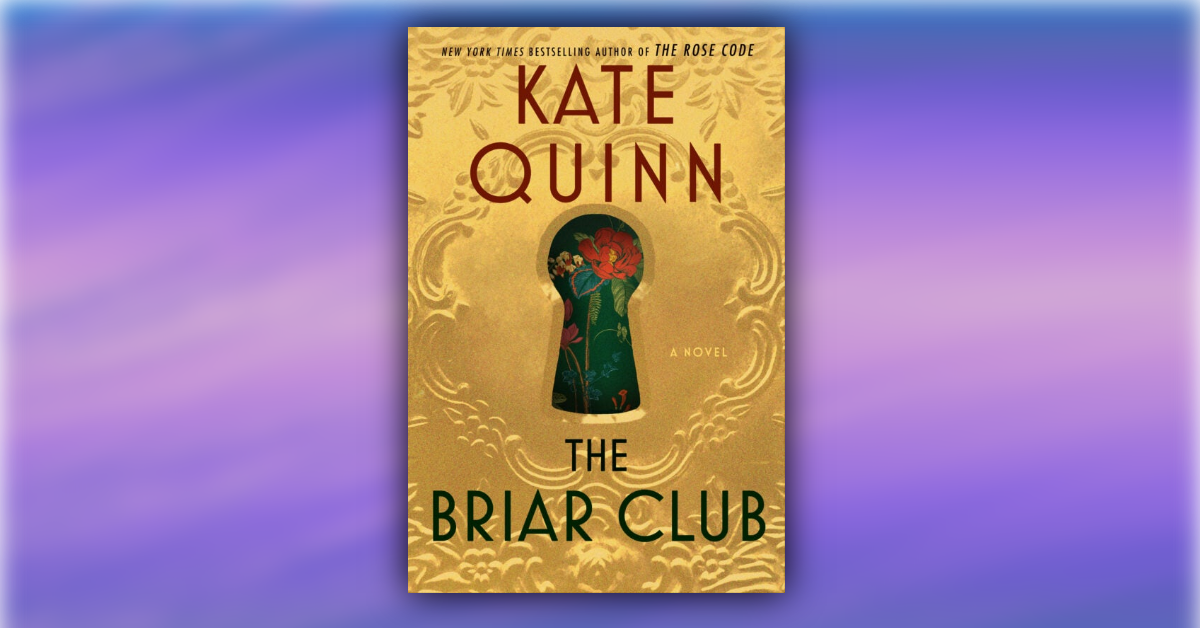The Briar Club - Book Review

Secrets abound in this engaging tale of female friendship in Cold War America.
Kate Quinn, author of The Diamond Eye, is back with another excellent female-driven historical fiction novel. The Briar Club, set in the early 1950's, tells the story of six women who form an unlikely friendship through a weekly potluck supper at their boarding house. Mixing elements of murder mystery, spy drama, historical snapshot, and women's fiction, it's a heartwarming story of found family and women trying to find their place in a changing world.
Washington, DC, 1950. Everyone keeps to themselves at Briarwood House, a down-at-the-heels all-female boardinghouse in the heart of the nation’s capital where secrets hide behind white picket fences. But when the lovely, mysterious widow Grace March moves into the attic room, she draws her oddball collection of neighbors into unlikely friendship: poised English beauty Fliss, whose facade of perfect wife and mother covers gaping inner wounds; policeman’s daughter Nora, who finds herself entangled with a shadowy gangster; frustrated baseball star Beatrice, whose career has come to an end along with the women’s baseball league of WWII; and poisonous, gung-ho Arlene, who has thrown herself into McCarthy’s Red Scare.
Grace’s weekly attic-room dinner parties and window-brewed sun tea become a healing balm on all their lives, but she hides a terrible secret of her own. When a shocking act of violence tears the house apart, the Briar Club women must decide once and for all: who is the true enemy in their midst?
Capturing the paranoia of the McCarthy era and evoking the changing roles for women in postwar America, The Briar Club is an intimate and thrilling novel of secrets and loyalty put to the test.
The story begins in 1954 with a murder. We don't know whose. Tantalizing hints about what happened are sprinkled throughout the book as the story alternates between the aftermath of the murder, and flashbacks of the four years leading up to it. As the storylines converge, Quinn impressively ratchets up the tension and mystery.
Each flashback chapter is told from a different character's point of view, each spotlighting a different part of the postwar experience. All the major themes of the 1950's are covered: the Red Scare, the aftermath of WW2, the impact of the Korean War on the homefront, segregation, the beginnings of women's lib, and more. I loved all their stories, but the fact that the book covers so much ground means that it can't follow any one thread too deeply. Sometimes it felt more like a series of loosely connected vignettes than a single story.
The characters are all very distinct, three-dimensional individuals. My favorite character was Reka, an elderly former art professor who escaped Germany during WW2. She's crotchety and unafraid to tell people how it is, but also has a spark of vitality and an understandable frustration for being dismissed due to her age. She's not your typical novel heroine, but that's one of the benefits of having so many female characters in one book—you can explore many different viewpoints.
The book unfortunately gets off to a slow and somewhat bizarre start. There's an odd motif where the present-day scenes (where details of the murder unfold) are told from the point of view of the house itself. It's an interesting experiment in personification, but I really didn't care for it much. And while I loved Pete (the boarding house owner's son) as a character throughout the story, starting off the first real chapter with his POV gave it a slightly YA feel incongruous with the rest of the book. Despite this rocky opening, once the story got going it was really good. Towards the end I couldn't put it down. I look forward to reading more from Kate Quinn.
Ratings
- Princess Power:

- Overall:

- Bechdel Test: Pass in spades
Learn about my Ratings System.
Twisters - Movie Review
Dead Man's Hand - Book Review